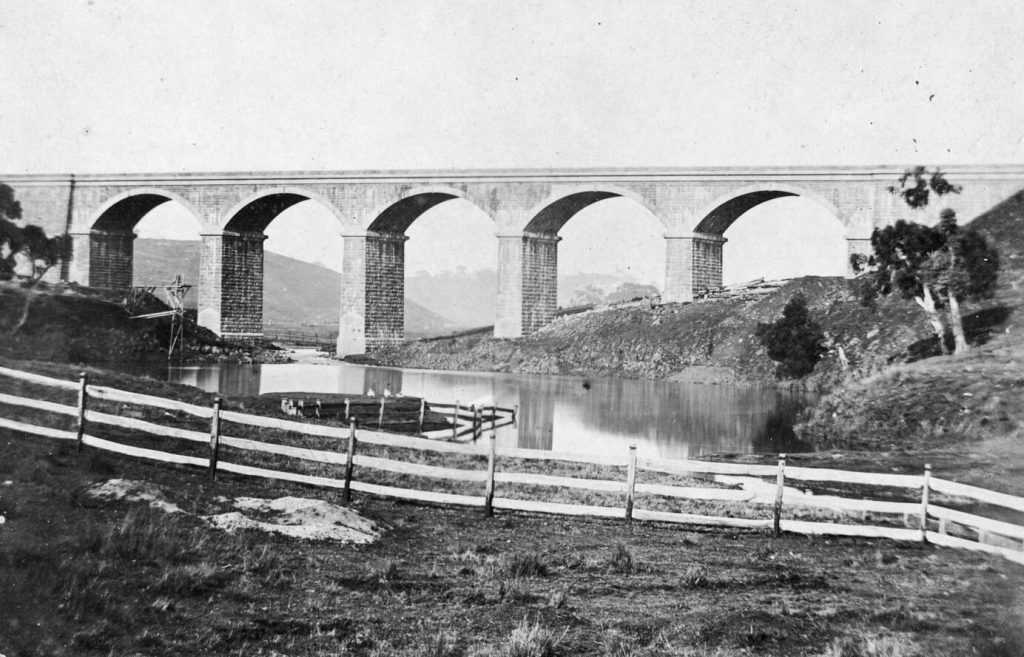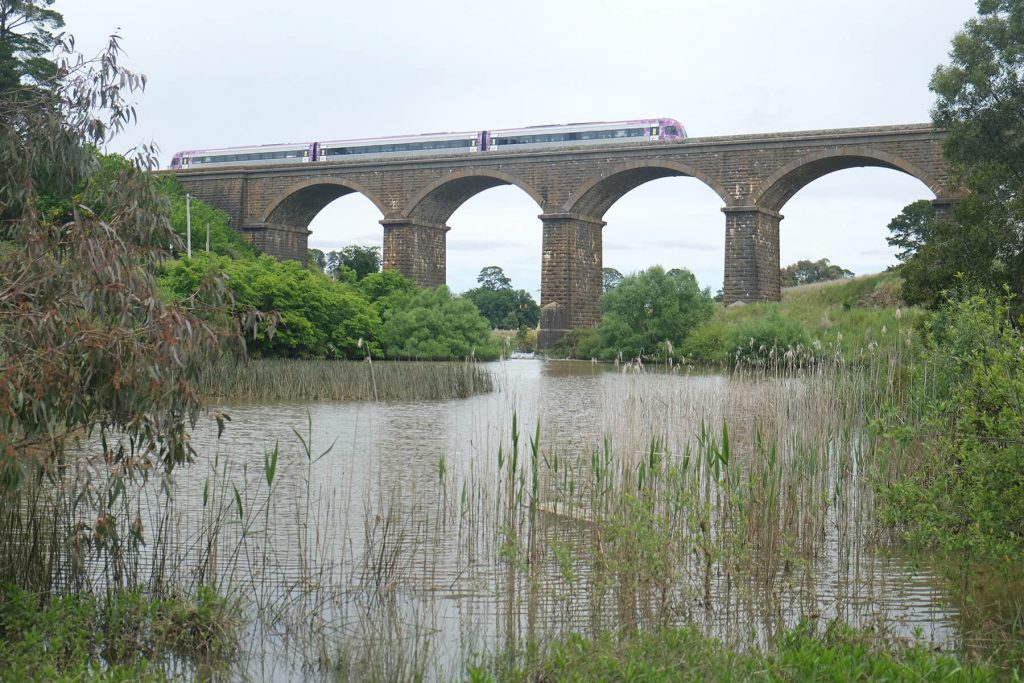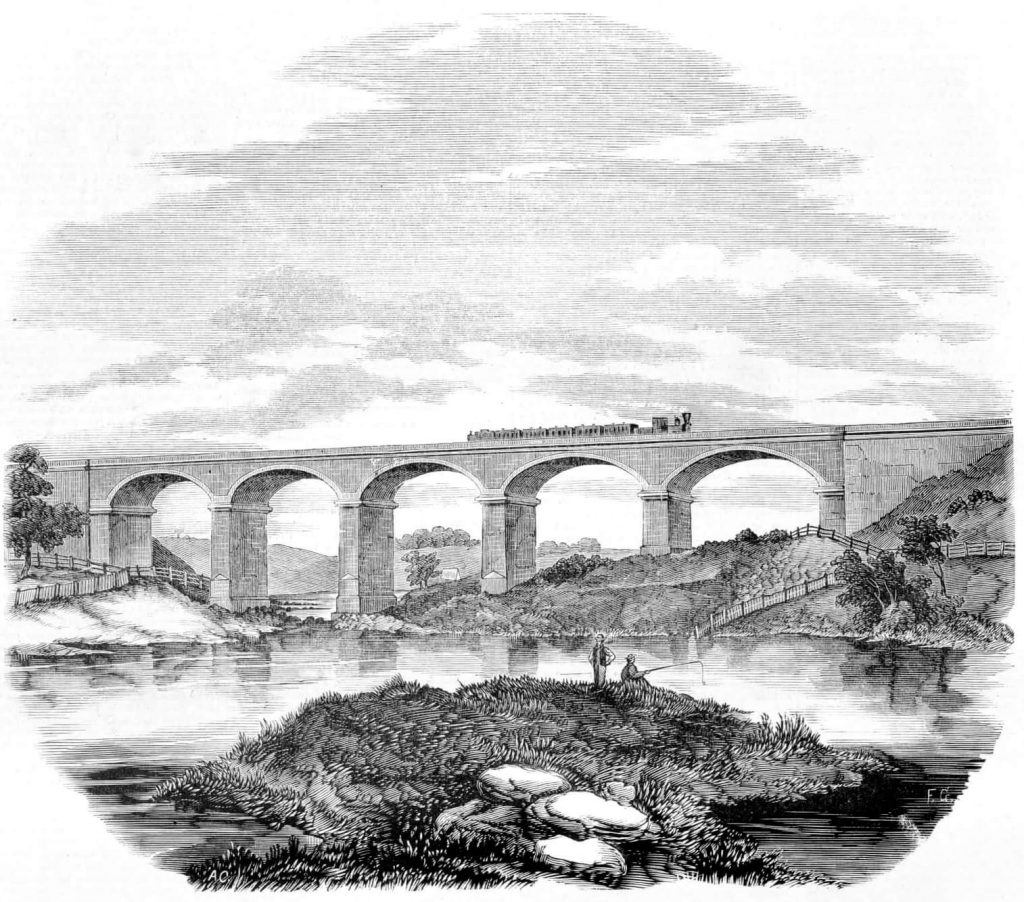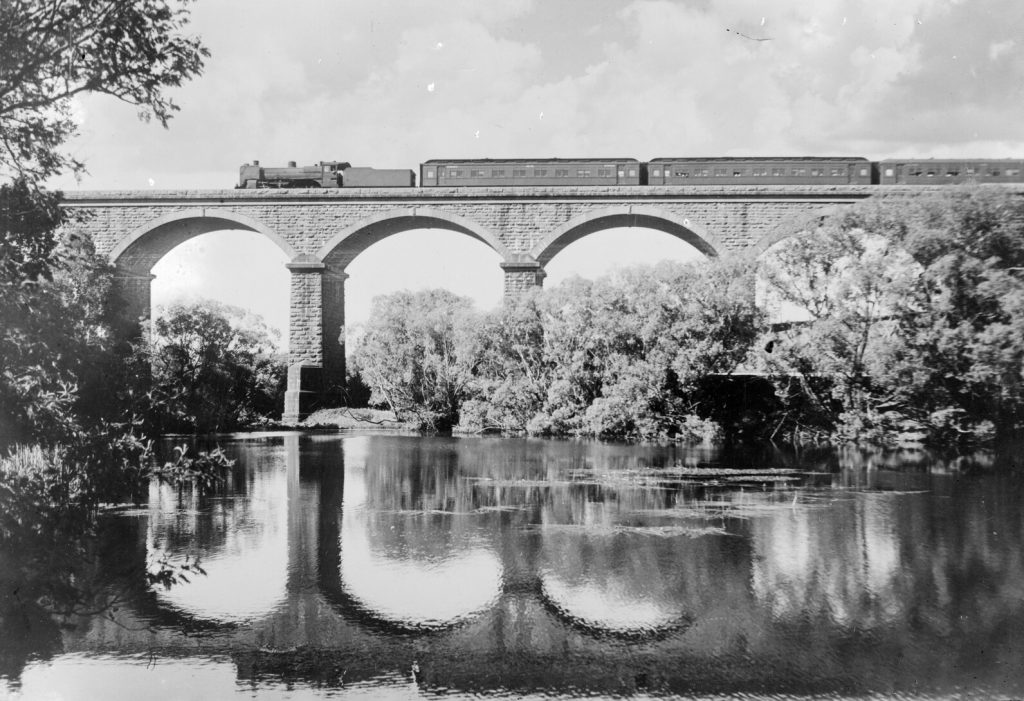Never miss a thing in the Macedon Ranges
Your Macedon Ranges is a free weekly email that keeps you informed about activities and events in the Macedon Ranges. Published every Sunday.
With thanks to Malmsbury Historical Society.

Popple Town sounds like it could be from a children’s TV show.
In fact, it was the name given to the tent “village” near the Coliban River that was the temporary home of the workers who built Malmsbury Viaduct.
(“Popple” apparently means the heaving, bubbling or rippling of water.)
About 500 people were present in October 1859 to see the Hon. G. S. W. Horne, the Commissioner of Public Works, officially lay the foundation stone. The crowd included children from the National School, who had marched in procession behind a flag bearing the words “Advance Malmsbury”.
The foundation stone – an enormous block of bluestone that weighed about 2.5 tons – was moved into position over a hole that contained a time capsule (a bottle carrying copies of the Mail and Advertiser newspapers).
The viaduct took about 14 months to build. The stone came from less than a mile away, and 500 men were required to quarry it. Thirty eight masons and labourers were employed to dress the stones, and the constant service of another 30 men was required to lay them.
The final keystone was inserted on October 25, 1860 – a year to the day after the foundation-stone ceremony – and the viaduct’s stonework was completed in February 1861.
At the start of the works, Mr Horne had looked to the future. The viaduct, he said, “would probably last for ever”.
✍️ Richard Padgett
📘 History of Malmsbury, by Roslyn Stevens, can be purchased for $10 (plus postage) by emailing Malmsbury Historical Society. Alternatively, copies are available at Malmsbury Bakery and Malmsbury General Store.



Enjoyed this article?
Get one like it every week by subscribing to Your Macedon Ranges
“I am so happy to be able to receive your emails and keep up to date with what’s going on in the area as well as learning a bit of local history!”